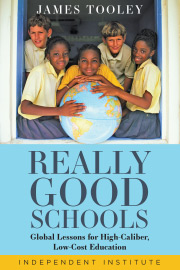More than One in Five Americans “Churn” Through Health Coverage within a Year
 The U.S. Census Bureau has just released the Current Population Report’s Health Insurance Coverage in The United States, 2015. This report sits alongside the Centers for Disease Control and Prevention’s National Health interview Survey as a critical source of understanding changes in health insurance in recent years.
The U.S. Census Bureau has just released the Current Population Report’s Health Insurance Coverage in The United States, 2015. This report sits alongside the Centers for Disease Control and Prevention’s National Health interview Survey as a critical source of understanding changes in health insurance in recent years.
The report discusses coverage during the three years from 2013 through 2015, so it does not reveal the large increase in employer-based coverage since the Great Recession. During this shorter period, there was an insignificant gain in employer-based coverage, and a large increase in persons dependent on Medicaid, the joint state-federal welfare program that provides health benefits to low-income residents. The number of people dependent on Medicaid for at least part of the year increased from 55 million in 2013 to 62 million in 2015. (Almost the entire increase took place in 2014, Obamacare’s first year of implementation.)
(As I have noted many times, it is incorrect to categorize Medicaid dependents as “insured” alongside those with private benefits, because the latter are earned. It is like categorizing those receiving cash welfare payments alongside wage-earners as people with “incomes.” Nevertheless, every official source makes this error.)
The Census Bureau’s report corroborates what I noted in my discussion of the National Health Insurance Survey: Obamacare’s exchanges are subject to significant churn: The number of people with (what the report describes as “direct-purchase” health plans increased from 36 million in 2013 to 46 million in 2014 and 52 million in 2015. Not all of these are in Obamacare exchange plans, but almost all of the increase is due to Obamacare exchange plans.
However, we know that 16 million people have not migrated to Obamacare exchange plans in two years! On the contrary, only about four million people are in Obamacare exchange plans for an entire year (as reported in the first quarter of 2016). People drop into Obamacare exchange plans but get out as soon as they can.
This has contributed to the significant churn in health coverage. Over one in five Americans had multiple coverage in 2015. Among those with “direct-purchase” policies this increases to almost 60 percent!
This is not a stable market. Those who believe insurers should invest in so-called “accountable” care that focusses on ensuring that beneficiaries stay healthy for the long run will be frustrated as long as U.S. health insurance is so fragmented.
* * *
For the pivotal alternative to Obamacare, see the Independent Institute’s widely acclaimed book, Priceless: Curing the Healthcare Crisis, by John C. Goodman.


















